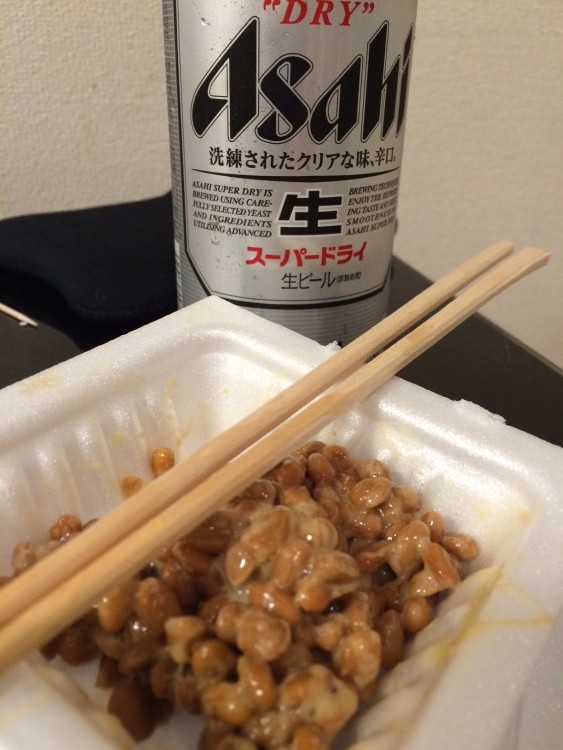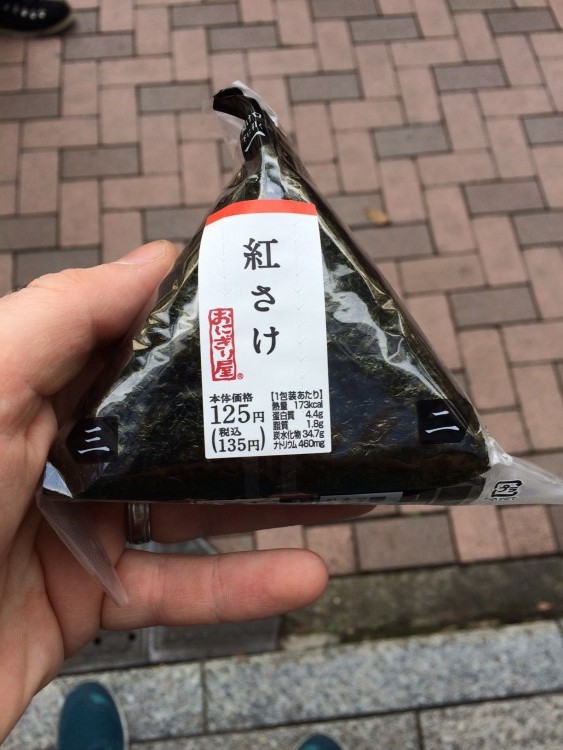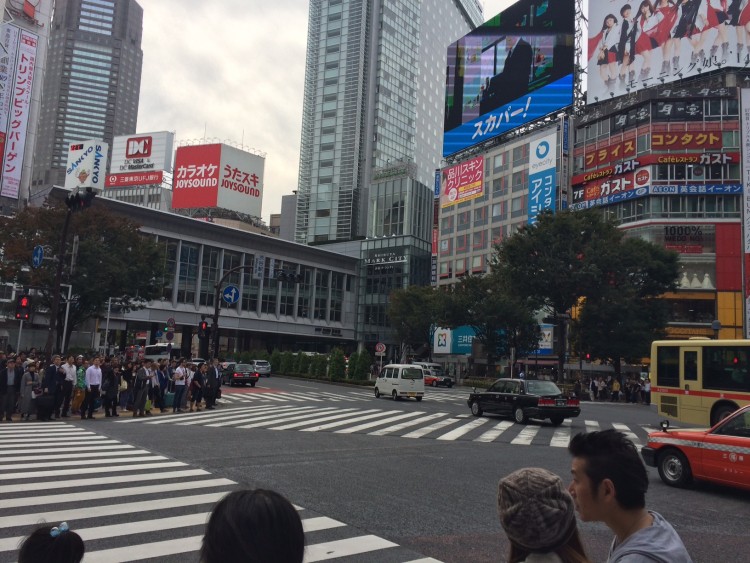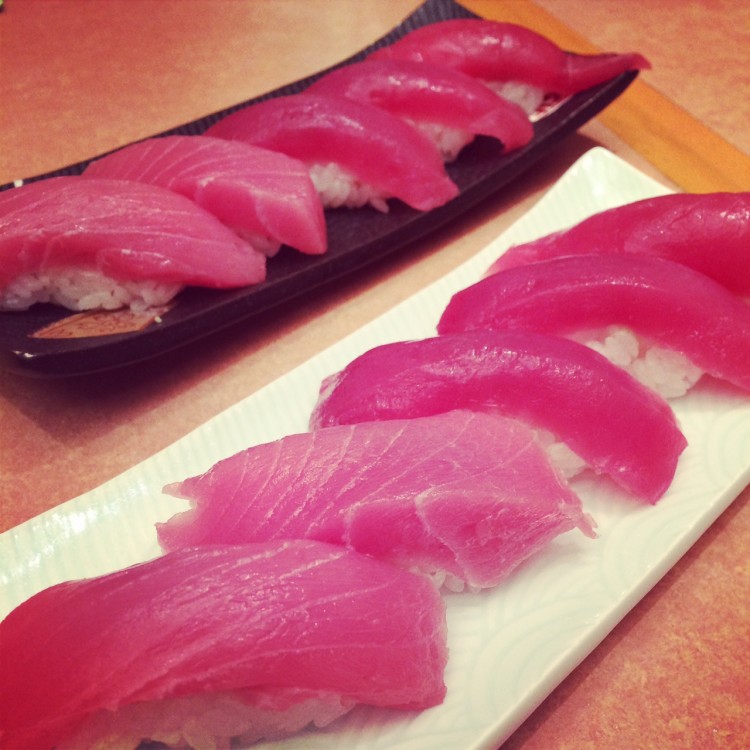Here are a collection of random things I noticed after visiting Japan a few weeks ago. Now these might not be so interesting for other people, I thought I would write down things I noticed before I forgotten them. It was my first time in Asia, so maybe I was a bit more sensitive to the differences.

In all we spent 6 days in Tokyo (æ±äº¬) and decided to spend it all in the city rather than rushing around the country on those super fast trains. There is enough to see & do in Tokyo for a week, perhaps even 2. We spent our days in different areas of the city and explored them one by one.
Food & Taste

The Japanese approach to food is, compared with the Irish, Germans or Americans quite different. In Japan they tend to go for food that either looks nice or has a nice texture. This may be a huge generalisation, so it’s probably better to say that they place a higher value on this. Of course they do sometimes take things to the extreme where you will see the most perfect melon you’ll ever see selling for over $200 in a supermarket. These Musk Melons are generally given as gifts, and not generally eaten straight away (if at all). We didn’t seen any square water melons, which also sell at crazy prices.
Another point worth noting is that fresh fruit is amazingly expensive, especially those fruit that aren’t grown in Japan. We saw 8 brussel sprouts on sale for $3.50 ! They were sealed nicely in plastic sheet, all ready for sale. The average price of an apple we saw was about $2, and melons generally were on sale for over $10.
Food or drink isn’t generally consumed on the go. I think the Germans have perfected this walk and eat culture, but for some reason in Japan it’s not done. I guess this probably more that you are likely to mess up the environment unnecessarily and dirty it for everyone else. Perhaps this is the Tatemae (建å‰), the idea that you do what is expected by society and required according to one’s position and circumstances (wikipedia).
Quietness & Orderliness
Compared with other large cities I’ve been to, like NYC & London, Tokyo is extremely quiet. One would think that a large city of over 13 million inhabitants would be all hustle and bustle. Thankfully, this is not the case. You probably won’t hear any horns being honked for example. In a week of walking 15-20km we only came across just one busker. Rush hours on the train can be a bit crazy, but as a tourist, just enjoy a lie in until after 9:30am to avoid these.
People walk orderly, generally on the left hand side of the pavement, all walking at a moderate speed. Nobody is rushing or pushing their way through the crowd. It all seems to just flow. And it’s probably more efficient too.

Rush hour at the train stations is a great example of orderliness. Here they encourage people to stand (orderly) side by side on the escalators and to use each step. The escalator is at max capacity, transporting as many people as possible. Walking on the escalators is generally discouraged, as that extra few seconds saved for you might mean a few seconds lost for someone else. Along with other pieces of etiquette, there are plenty of signs to tell you want you should and shouldn’t do.
The quietness extends to trains. It’s discouraged to talk on your phone on the train, people tend to either sleep or use their phones on the train. You won’t see many people talking to each other on the train either.
Queuing
A bit related to orderliness. It seemed that the Japanese have an affinity for queuing. They will quietly queue for a train, in individual lines, where it’s marked that the train will stop. We were a bit surprised that people would get in these mini queues 5 minutes before the train would appear.
In downtown Tokyo you’ll see queues for all the cool places to eat or shop. We saw hundreds of people waiting to get a gourmet popcorn fix or queueing for Max Brenner, the famous chocolate shop or Alice in Wonderland shop. Theme shops and restaurants are pretty normal.
Opening Times for coffee shops
Starbucks and other chains do exist, but for those who want to go to a local coffee shop, you’ll find many coffee shops don’t open until mid day. This one struck us as a bit of a surprise, being so used to having coffee in the morning.
Bins & Smokers
Since the 1995 Sarin gas attack on the Tokyo underground you won’t find many bins in public places. People generally take their rubbish they make home with them. This can get a bit funny when you see someone putting picking up after their dog, and placing the warm plastic bag in their expensive hand bag. A top tip for finding bin is at the supermarkets like Lawson or 7/11. You’ll find them either outside, with about 5 separate bins for different types of waste or inside the door. In Tokyo at least it seemed that separating your waste was taken pretty seriously. In our AirBnB there was about 8 different ways to separate your rubbish.
Smoking is another thing that’s different to the West. In Tokyo at least you can smoke in bars & restaurants, they all have dedicated smoking areas. Where it get’s different is that you won’t see them walking on the street and smoking. Instead they have these special smoking centres dotted around the streets. Here smokers can gather and smoke (in silence).
Face-masks & Tissues
Yes, people do wear those face-masks. I’d guesstimate that it’s about 1 in 20 that are wearing them at anyone time. The etiquette here is that you should wear one if you have a cold coming on, so that you don’t share your germs with anyone else.
We bought some Japanese tissues, and well they seemed not as robust at Western tissues. Maybe it was the brand we bought. From time to time we also saw that tissues were given out on street corners as advertising gifts. Each packet would have an ad for something and 2 or 3 tissues.
Food tips forRoppongi

As we stayed in Roppongi / Nogizaka we tended to eat around there in the evening. There is of course plenty of places to eat, so there are our favourites.
- Omae XEX Teppanyaki — ¥¥¥ – Expensive, but well worth it. Americans think of a fancy Benihana, and 100 times better.
- L’Atelier de Joel Robuchon — ¥¥¥ — Nice, friendly & tasty, perhaps a little over priced. Good when you’ve had enough of traditional Japanese cuisine.
- Sushi – 35.666813, 139.728066 — Â¥ – Great local spot, busy every evening, sushi selection is great.
- Yakitori – 藤森ビル – 35.661596, 139.732915 — ¥¥ – Popular with locals and ex-pats. Friendly staff, and tasty food.
Thanks to Joe & Kate and Mike & Kana for entertaining and all their Tokyo tips!
